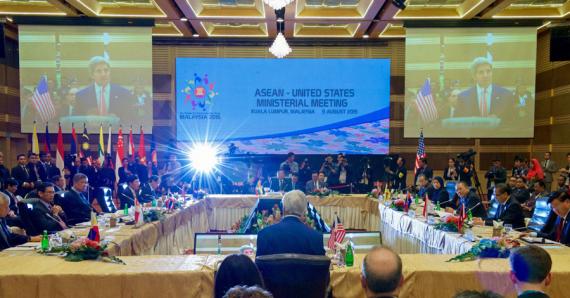5 Things You Should Know About the U.S.-ASEAN Partnership
5 Things You Should Know About the U.S.-ASEAN Partnership
Excerpt from: The U.S. Department of State Official Blog | By:Matthew Palmer | February 1, 2016

Photo Source: blogs.state.gov
President Barack Obama has made our relationship with the Association of Southeast Asian Nations (ASEAN) and engagement with Southeast Asia a key priority under his Rebalance strategy. For this reason he has invited his ASEAN counterparts to the Sunnylands estate in Rancho Mirage, California on February 15th and 16th for a special Summit. This Summit will be the first ever standalone U.S.-ASEAN summit meeting in the United States, recognizing the central role ASEAN plays in the Asia-Pacific and the importance we place on our partnership.
Since its founding, almost five decades ago, ASEAN has grown to encompass 10 member states and represents one of the world’s fastest-growing and most dynamic economies. Here are a few things you should know about this important partnership:
We work with ASEAN to sustain and enhance a rules-based order for Asia: ASEAN has long been at the center of the region’s multilateral architecture. It plays a critical role in promoting peace, prosperity, and a rules-based order in the Asia-Pacific that benefits small and large nations alike — a concept called “ASEAN centrality.” The East Asia Summit (EAS), for example, has ASEAN at its core and has developed as the premier leaders’ level forum for engaging the region on strategic political and security issues, such as responding to the threat of terrorism and countering violent extremism, maintaining a peaceful maritime order, and tackling pandemic disease.
We have a new partnership, stronger than ever: Over the past seven years, the United States has worked to further strengthen our partnership with ASEAN. In 2010, the United States became the first Dialogue Partner to appoint a resident Ambassador to ASEAN in Jakarta and establish a dedicated Mission. In November 2015, in recognition of our mutual commitment to one another, the leaders of the United States and ASEAN elevated our relationship to a strategic partnership. The beginning of this year marked the launch of the ASEAN Community, an ambitious effort to promote further integration that we are confident will open up new opportunities for even closer cooperation.
We are partners in economic growth: ASEAN is home to 660 million people and is, collectively, the world’s seventh largest economy. It supports over half a million U.S. jobs. American products are popular with the region’s large, youthful consumer base. ASEAN is America’s fourth largest export market, and the United States is ASEAN’s third largest trading partner. The United States has been an important partner for ASEAN and its member states in implementing the ASEAN Single Window, an effort to harmonize regulations and documentation, akin to a one-stop customs shop for exporters looking to do business in Southeast Asia.
We work together to combat shared security challenges: The leading security challenges of the 21st century reach across borders. In Southeast Asia, these include: terrorism; violent extremism; climate change; environmental degradation and pollution; energy; infectious diseases; disarmament; proliferation of weapons of mass destruction; cybersecurity; trafficking in persons; illicit trafficking of wildlife and timber; illegal, unreported and unregulated fishing; and tensions in the South China Sea. As a multilateral institution, ASEAN has an essential role to play in addressing these common challenges.
We’re building a shared future for our young people: Our people-to-people ties are more robust than ever with millions of our citizens travelling to each other’s shores every year. The Fulbright Exchange of U.S.-ASEAN Scholars Program and President Obama’s Young Southeast Asian Leaders Initiative (YSEALI) offer abundant opportunities to cultivate ties among youth. These linkages and cultural ties make our relationship that much stronger.
